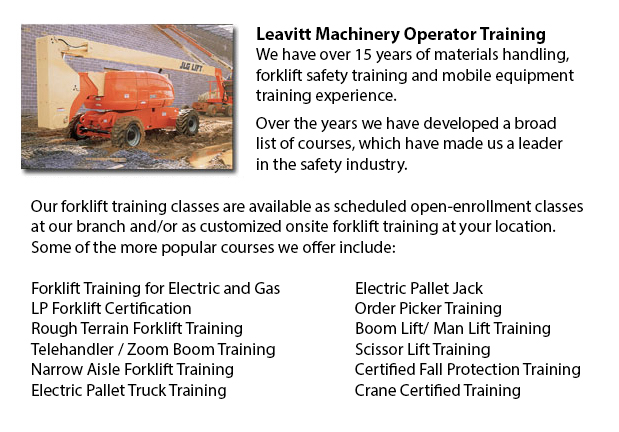
Nanaimo Aerial Lift Safety Training - There are approximately 26 to 30 construction fatalities in North America attributed to the utilization of aerial lifts. Nearly all of those killed are craftsmen like for instance laborers, painters, electrical workers, carpenters or ironworkers. Nearly all deaths are caused by tip-overs, electrocutions and falls. The greatest danger is from boom-supported lifts, like for instance bucket trucks and cherry pickers. Nearly all fatalities are connected to this kind of lift, with the rest involving scissor lifts. Other dangers consist of being struck by falling objects, being thrown out of a bucket, and being caught between the guardrail or lift bucket and an object, like a joist or steel beam.
To be able to operate an aerial lift safely, carry out a check on the following things prior to making use of the device: emergency and operating controls, safety devices (like for example, guardrails and outriggers), personal fall protection gear, and wheels and tires. Look for possible leaks in the air, hydraulic fluid and fuel-system. Inspect the device for missing or loose parts.
The location where the device would be used should be carefully inspected for potential hazards, such as bumps, holes, drop-offs and debris. Overhead power lines should be avoided or closely monitored. It is suggested that aerial lift devices be used on surfaces which are stable and level. Do not work on steep slopes that go beyond slope limits specified by the manufacturer. Even on a slope that is level, outriggers, brakes and wheel chocks must be set.
Employers are needed to provide aerial lift operators and maintenance mechanics with the correct instruction manuals. Operators and mechanics need to be trained by a qualified individual experienced with the applicable aerial lift model.
Aerial Lift Safety Guidelines:
o Close lift platform chains or doors prior to operating.
o Climbing on and leaning over guardrails is prohibited. Stand on the platform or floor of the bucket.
o Stay within manufacturer's load-capacity restrictions.
o Make use of work-zone warnings, such as cones and signs, when working near traffic.
If proper procedures are followed, electrocutions are preventable. Stay at least 10 feet away from whatever power lines and certified electricians must insulate and/or de-energize power lines. People working should utilize personal protective equipment and tools, such as a bucket that is insulated. However, a bucket that is insulated does not protect from electrocution if, for example, the worker touches another wire providing a path to the ground.
When inside the bucket, workers should prevent possible falls by securing themselves to the guardrails by making use of a positioning device or a full-body harness. If there is an anchorage inside the bucket, a positioning belt together with a short lanyard is acceptable.
Tip-overs are avoidable by following the manufacturer's instructions. Unless the manufacturer specifies otherwise, never drive whilst the lift platform is elevated. Follow the vertical and horizontal reach restrictions of the device, and never exceed the load-capacity that is specified.
-
Nanaimo Boom Lift Certification
Nanaimo Boom Lift Certification - Using elevated work platforms allow for maintenance operations and work to be carried out at elevated work heights which were otherwise not reachable. Workers making use of scissor lifts and boom lifts can learn how... More -
Nanaimo Boom Lift Safety Training
Nanaimo Boom Lift Safey Training - Boom lifts are a kind of aerial lifting device or elevated work platform which are commonly used in industry, warehousing and construction. Boom lifts could be utilized in practically whichever environment because o... More -
Nanaimo Loader Operator Training
Nanaimo Loader Operator Training - Loader Operator Training - Forklift training is a prerequisite within North America and is intended to prevent workplace death and injuries. Lift truck training provides driver training intended for forklift operato... More -
Fall Protection Certification in Nanaimo
There are high numbers of injuries at work associated to falling and lots of fall-related deaths reported each and every year. Most of these instances might have been prevented with better training, better measures in place, and by properly equipping... More -
Nanaimo Crane Ticket
Nanaimo Crane Ticket - The modern version of a crane can be either complex or simple, and cranes vary based on their use. Mobile cranes, for example are rather simple. A telescopic boom or steel truss mounts its movable platform. A system of levers o... More -
Operator Safety Certification | Re-Qualification Certification | In-House Instructor Certification in Nanaimo
Lift trucks are used in practically all industrial construction sites and in warehouse operations and in boat yards. The reach feature of a forklift is a very important part utilized in several applications like when a shelving system is being used t... More -
Aerial Lift / Boom Lift / Man Lift / Scissor Lift Certification in Nanaimo
Scissor hoists are lift tables which lift up materials and individuals and supplies vertically. They are normally used in construction, commercial and industrial environments. A common use of scissor hoists is for lowering or lifting construction sup... More -
Crane / Overhead Crane / Self-Erect Crane / Truck Mounted Crane / Hydraulic Cranes Certification in Nanaimo
Bridge cranes or likewise called overhead cranes are a type of industrial material handling crane utilizing a line and hook apparatus that runs on a horizontal beam running along two widely separated rails. Several overhead cranes can be seen inside... More

Forklift Certification Nanaimo
TOLL FREE: 1-888-254-6157
Nanaimo, British Columbia
forkliftcertificationnanaimo.com
Email Us
About Us


